A Phenomenological Approach to Human Existence

LOL3895591 Ludwig Mies van der Rohe; (add.info.: Ludwig Mies van der Rohe. German architect 27 March 1886 17 August 1969.); © Jeff Lowenthal. All rights reserved 2024.
1. Who Was Medard Boss?
Medard Boss (1903-1990) was a Swiss psychiatrist and psychoanalyst who pioneered Daseinsanalysis, a revolutionary approach to psychotherapy grounded in Martin Heidegger’s phenomenological philosophy. After initially training in Freudian psychoanalysis, Boss underwent a profound intellectual transformation upon encountering Heidegger’s work, which led him to develop a therapeutic approach that rejected the mechanistic, deterministic models of human behavior prevalent in his time. Through his decades-long collaboration with Heidegger, Boss created a framework for understanding human existence that emphasized openness, freedom, and authentic engagement with the world. His contributions fundamentally challenged conventional psychiatric thought and offered a humanistic alternative to both psychoanalysis and behaviorism, influencing generations of therapists seeking more phenomenologically-grounded approaches to healing.
2. Main Ideas and Key Points
- Medard Boss developed Daseinsanalysis through a close collaboration with philosopher Martin Heidegger, fundamentally reorienting psychotherapy toward phenomenological analysis of human existence.
- Boss rejected the mechanistic, reductionist tendencies in Freudian psychoanalysis and scientific psychology, arguing that they obscured rather than illuminated human experience.
- At the core of Daseinsanalysis is Heidegger’s concept of Dasein (“being-there”), which understands human existence as fundamentally relational, temporal, and characterized by openness to the world.
- Boss critiqued the subject-object split dominant in Western psychology, proposing instead that humans and their world constitute an indivisible unity of meaningful relationships.
- Daseinsanalysis emphasizes that human existence is always situated within specific historical, cultural, and interpersonal contexts that shape how we experience and make meaning.
- Boss rejected the deterministic view of human behavior, emphasizing that freedom and responsibility are inherent aspects of human existence, even in psychological suffering.
- Psychological symptoms are understood not as malfunctioning mechanisms but as restricted ways of being-in-the-world that limit one’s possibilities for meaningful engagement.
- Daseinsanalytic therapy aims to help patients recognize their constricted modes of existing and expand their capacities for authentic relationship with themselves, others, and the world.
- Boss’s approach to dreams differed radically from Freud’s, viewing dreams not as disguised wish fulfillments but as authentic expressions of one’s mode of being-in-the-world.
- The therapeutic relationship in Daseinsanalysis is characterized by an authentic encounter between therapist and patient, emphasizing presence, openness, and shared exploration.
- Boss applied Daseinsanalysis to understanding psychosomatic medicine, suggesting that bodily symptoms express fundamental modes of existing rather than merely physical dysfunction.
- The legacy of Boss’s work extends beyond psychotherapy into broader philosophical questions about medicine, technology, and what it means to be human in the contemporary world.
3. From Psychoanalysis to Daseinsanalysis: Boss’s Intellectual Journey
Medard Boss began his career as a conventional Freudian psychoanalyst, completing his training analysis with Sigmund Freud and later working closely with Carl Jung. However, his intellectual trajectory took a decisive turn when he encountered Martin Heidegger’s groundbreaking work “Being and Time” (1927). This philosophical text catalyzed a profound reorientation in Boss’s thinking about human existence and psychological suffering.
Boss found in Heidegger’s phenomenological approach a more adequate foundation for understanding the human condition than the natural-scientific model that underpinned Freudian metapsychology. While Freud had explained psychological phenomena through theoretical constructs like the unconscious, repression, and psychic energy, Boss came to see these as mechanistic metaphors that obscured rather than illuminated lived human experience.
The pivotal meeting between Boss and Heidegger occurred in 1947, initiating what would become a 30-year collaboration. Heidegger conducted seminars for psychiatrists at Boss’s home in Zollikon, Switzerland, from 1959 to 1969, which became known as the “Zollikon Seminars.” These meetings provided the intellectual crucible in which Daseinsanalysis took shape as Heidegger’s philosophical insights were applied to psychiatric and psychotherapeutic practice.
Boss documented this transformation in his major works, particularly “Existential Foundations of Medicine and Psychology” (1979) and “Psychoanalysis and Daseinsanalysis” (1963). In these texts, he systematically critiqued the scientific-theoretical foundations of conventional psychiatry and psychoanalysis while articulating an alternative grounded in Heideggerian phenomenology. This alternative did not abandon Freud’s clinical observations but reinterpreted them within a radically different philosophical framework.
4. The Philosophical Foundations of Daseinsanalysis
4.1 Dasein and Being-in-the-World
The cornerstone of Boss’s approach is Heidegger’s concept of Dasein, which literally means “being-there.” Unlike the Cartesian notion of the human being as an isolated thinking subject confronting an external world of objects, Dasein refers to the distinctive way humans exist by already being involved in a world of meaningful relationships. Humans do not first exist as self-contained subjects who then form connections with the world; rather, to be human is to be already engaged in a world of significance.
This fundamental relatedness, which Heidegger called “being-in-the-world,” became central to Boss’s understanding of both psychological health and pathology. From this perspective, psychological difficulties arise not from intrapsychic conflicts between hypothetical mental structures but from constrictions in a person’s ways of relating to the world, others, and themselves.
Boss wrote: “Human being is essentially an illuminating, disclosing existing-in-the-world together with other human beings and with everything else that is appearing, perceivable and present in the world.” This understanding of human existence as fundamentally open and relational provided the philosophical foundation for his therapeutic approach.
4.2 Beyond the Subject-Object Split
A crucial aspect of Boss’s contribution was his critique of the subject-object dichotomy that dominated Western psychology. Traditional approaches, including Freudian psychoanalysis, presupposed a fundamental separation between an internal, subjective realm and an external, objective world. Mental health was often conceptualized as the ego’s successful adaptation to external reality.
Boss rejected this dualism, arguing that it misrepresented human experience. Drawing on Heidegger, he maintained that humans do not primarily encounter a world of neutral objects that are subsequently invested with meaning. Rather, we perceive things directly in terms of their significance to our projects and concerns. A pen is not first perceived as an object with certain physical properties and then interpreted as a writing instrument; it is immediately encountered as something-to-write-with.
This perspective had profound implications for psychology. It meant that perceptions, emotions, and behaviors could not be adequately understood as subjective states caused by objective stimuli. Instead, they express how a person is attuned to and engaged with a meaningful world. Anxiety, for instance, is not merely an internal feeling but a way of being-in-the-world that reveals how certain possibilities appear threatening.
4.3 Temporality and Historicity
Another key dimension of Daseinsanalysis is its emphasis on human temporality. Following Heidegger, Boss understood human existence as inherently temporal, but not in the sense of occurring within linear, clock time. Rather, human temporality involves a dynamic interplay of past, present, and future. We exist by projecting ourselves toward future possibilities based on our inherited past while engaging with the present situation.
This understanding transformed how Boss approached psychological problems. A patient’s symptoms are not simply effects of past causes but express how past experiences structure their current way of being and constrain their future possibilities. Therapy, accordingly, aims not at uncovering historical causes but at opening up new possibilities for being by transforming how one relates to one’s past.
Boss wrote: “Human existence has a temporal character which is not simply a sequence of ‘nows’… but rather a continual coming-toward-oneself in which one’s past is taken up into one’s present in light of one’s projected possibilities.” This temporalized understanding of human existence fundamentally distinguished Daseinsanalysis from approaches that viewed psychological problems as results of past traumas or conditioning.
5. Boss’s Critique of Traditional Psychiatry and Psychoanalysis
5.1 The Limitations of the Medical Model
Boss mounted a profound critique of psychiatry’s adherence to the medical model, which conceptualized psychological disorders as analogous to physical diseases—as malfunctions in the mental apparatus requiring technical intervention. He argued that this approach failed to recognize the uniquely human nature of psychological suffering and reduced patients to broken mechanisms rather than persons whose way of existing had become constricted.
In “Existential Foundations of Medicine and Psychology,” Boss wrote: “The natural-scientific approach to human beings presupposes that they can be objectively observed, measured, and manipulated like any other natural object. This perspective necessarily excludes precisely what is most essential to human existence: the way we meaningfully relate to our world.” By treating psychological symptoms as mere dysfunctions to be corrected, mainstream psychiatry obscured their significance as meaningful expressions of a person’s mode of being.
This critique extended to psychiatry’s increasing reliance on biological explanations and pharmacological interventions. While not denying the relevance of neurophysiology, Boss insisted that biological factors could never fully account for the lived experience of psychological suffering. Explaining depression solely in terms of neurotransmitter imbalances, for instance, fails to address how the depressed person experiences a constriction of their world and a diminishment of possibilities.
5.2 Rethinking Freudian Concepts
Despite his departure from orthodox psychoanalysis, Boss maintained a nuanced relationship with Freud’s legacy. Rather than simply rejecting Freudian concepts, he sought to reinterpret them phenomenologically, stripping away their mechanistic and deterministic assumptions.
The Freudian unconscious, for example, was reconceptualized not as a hidden reservoir of repressed content but as aspects of a person’s world-relatedness that remain undisclosed or unacknowledged. What appears “unconscious” are not hidden mental contents but dimensions of one’s existing that one has not yet come to recognize or assume responsibility for.
Similarly, Boss reinterpreted repression not as a psychic mechanism that pushes unacceptable impulses into the unconscious but as a person’s active turning-away from certain possibilities of being. This turning-away is not an intrapsychic event but a modification of how one relates to the world.
Boss wrote: “What Freud called ‘repression’ is better understood as a person’s refusal to remain open to certain possibilities of existing that appear threatening or overwhelming.” This reframing retained the clinical phenomenon Freud had identified while placing it within a phenomenological rather than mechanistic framework.
5.3 Freedom and Determinism
A central point of contention between Boss and traditional psychoanalysis concerned human freedom. Freud’s deterministic model suggested that behavior, thoughts, and feelings were caused by unconscious forces over which the person had little control. Therapy aimed to bring these forces into consciousness, potentially allowing some measure of choice.
Boss, drawing on Heidegger’s existential philosophy, insisted that freedom is not something to be achieved through therapy but an inescapable aspect of human existence. Even in psychological suffering, a person is not simply the passive victim of causal forces but is actively maintaining a particular way of being-in-the-world, however constricted or self-defeating it may be.
This perspective transformed the therapeutic enterprise. Rather than seeking to uncover hidden causes, Daseinsanalytic therapy helps patients recognize how they are actively participating in perpetuating their suffering and realize that other possibilities of existing remain open to them. The therapist does not position themselves as an expert who can explain the patient’s condition through theoretical constructs but as a fellow human who accompanies the patient in exploring and expanding their ways of relating to the world.
6. Daseinsanalytic Understanding of Psychological Phenomena
6.1 Anxiety, Guilt, and Authenticity
Boss’s phenomenological approach offered fresh insights into fundamental psychological experiences like anxiety and guilt. Rather than viewing anxiety as merely pathological, Boss followed Heidegger in recognizing it as a disclosure of human finitude and freedom. Anxiety reveals that our existence is not secured by any absolute foundation but is instead characterized by openness and possibility.
In “Anxiety, Guilt and Psychotherapeutic Liberation” (1962), Boss wrote: “Anxiety is the experience of the threat posed to us by our own freedom—the recognition that we must choose our way of being without any ultimate guarantees.” This existential anxiety differs from neurotic anxiety, which arises when a person attempts to evade the uncertainties and responsibilities of existence by clinging to illusory securities.
Similarly, Boss understood guilt not primarily as a feeling arising from transgressing societal norms or parental prohibitions but as the awareness of unfulfilled possibilities inherent in one’s existence. To be human is to constantly face choices that inevitably foreclose other possibilities, generating an ontological guilt that cannot be entirely eliminated but must be authentically assumed.
The concept of authenticity became central to Boss’s therapeutic vision. Drawing on Heidegger’s distinction between authentic and inauthentic existence, Boss suggested that psychological suffering often stems from living inauthentically—conforming to social expectations, fleeing from one’s freedom, or disowning aspects of one’s being. Therapy aims to foster a more authentic existence characterized by openness to one’s possibilities and limitations, honest self-confrontation, and responsible choice.
6.2 Dreams in Daseinsanalysis
Boss’s approach to dreams represented one of his most significant departures from Freudian orthodoxy. Freud had interpreted dreams as disguised expressions of repressed wishes, requiring decoding through techniques like free association. Boss rejected this “hermeneutics of suspicion,” arguing instead that dreams directly disclose aspects of the dreamer’s existence that might be overlooked in waking life.
In his landmark work “I Dreamt Last Night…” (1977), Boss wrote: “Dreams are not cryptic expressions of repressed content but authentic manifestations of the dreamer’s being-in-the-world.” The dream world is not a symbolic representation of something else but a particular mode of the dreamer’s existence, characterized by different constraints and possibilities than waking life.
Daseinsanalytic dream interpretation focuses not on translating dream content into another language (e.g., symbols into repressed wishes) but on exploring the quality of the dreamer’s relationships within the dream. How does the dreamer relate to other figures, spaces, and situations? What possibilities are open or closed? These questions reveal the dreamer’s characteristic ways of being-in-the-world.
This approach transformed therapeutic practice. Rather than positioned as an expert decoder of hidden meanings, the therapist joins the patient in phenomenological exploration of the dream’s disclosed world. The aim is not to explain the dream causally but to help the dreamer recognize how it reveals aspects of their existence that might inform more authentic choices in waking life.
6.3 Psychosomatic Phenomena
Boss made groundbreaking contributions to psychosomatic medicine, challenging the dualistic assumption that bodily symptoms were either “physical” (with organic causes) or “psychological” (with mental causes). From a Daseinsanalytic perspective, the body is not a physical object inhabited by a mind but an aspect of one’s being-in-the-world—the concrete form of one’s existence.
In “Existential Foundations of Medicine and Psychology,” Boss wrote: “The body is not primarily a physical organism but a field of relational possibilities through which we engage with the world.” Bodily symptoms express not hidden psychological conflicts but constrictions in a person’s embodied way of relating to their world.
A migraine headache, for instance, might manifest a person’s constricted relationship to challenging situations—a literal “pressure” that expresses how certain life demands are encountered as overwhelming. Rather than seeing such symptoms as messages from the unconscious, Boss understood them as concrete embodiments of one’s existing.
This perspective offered an alternative to both reductionist biological explanations and traditional psychosomatic theories. It avoided reducing physical symptoms to “psychological causes” while recognizing that all human bodily experiences are inherently meaningful within the context of a person’s being-in-the-world.
7. The Practice of Daseinsanalytic Therapy
7.1 The Therapeutic Relationship
The heart of Daseinsanalytic therapy lies in the unique quality of the therapeutic relationship. Unlike approaches that position the therapist as a detached expert, Boss emphasized the importance of authentic human encounter. The therapist does not adopt a technical stance toward the patient but meets them as one human being to another, within what Boss called a “clearing” (Lichtung) where aspects of existence can emerge into visibility.
Boss wrote: “The therapist’s primary task is not to analyze, interpret, or modify the patient’s behavior but to be fully present to the patient’s existence, creating a space where constricted possibilities can be recognized and expanded.” This presence involves not methodical detachment but attentive openness to the full range of the patient’s being-in-the-world.
This does not mean the therapist simply offers warm acceptance. Rather, they engage in what Boss called “loving confrontation”—challenging the patient’s restricted ways of existing while respecting their freedom and capacity for self-determination. The therapist does not impose their understanding but helps patients recognize for themselves how they are limiting their engagement with life’s possibilities.
7.2 The Therapeutic Process
Daseinsanalytic therapy proceeds not through technical interventions but through a gradual exploration of the patient’s way of being-in-the-world. This exploration encompasses their relationships with others, their embodied experiences, their temporal orientation (how they relate to past, present, and future), and the physical and cultural spaces they inhabit.
Unlike approaches focused on symptom reduction, Daseinsanalysis aims at a broader transformation of the person’s existence. Symptoms are not targeted directly but are understood as expressions of constricted ways of being that can open up through the therapeutic process. As patients recognize and assume responsibility for their current mode of existing, new possibilities naturally emerge.
Boss described the therapeutic process as similar to the clearing of a forest path: “The therapist does not construct a new path for the patient but helps clear away the obstacles that have overgrown their inherent capacity for open engagement with the world.” These obstacles might include rigid self-interpretations, habitual avoidance of certain experiences, or unrecognized assumptions about what is possible or permissible.
7.3 Case Examples and Therapeutic Techniques
While Boss emphasized that Daseinsanalysis is not a set of techniques but an approach grounded in phenomenological understanding, he provided numerous case examples illustrating its application. One frequently cited case involved a man suffering from severe migraine headaches that had not responded to medical treatment.
Rather than searching for repressed conflicts or psychological causes, Boss explored with the patient how the headaches manifested within his entire way of being-in-the-world. It emerged that the patient experienced intense pressure to meet others’ expectations while denying his own needs—a constriction literally embodied in the painful pressure in his head. As therapy progressed, the patient began to recognize and modify this self-negating pattern, and the headaches gradually diminished.
Another case involved a woman with agoraphobia who feared leaving her home. Traditional approaches might have sought childhood causes or attempted gradual exposure. Boss instead explored the quality of the patient’s spatial experience—how the world beyond her home appeared as threatening and overwhelming rather than inviting. Through the therapeutic relationship, which provided a secure “space” for exploration, the patient gradually developed greater openness to the world’s possibilities.
While Boss did not prescribe specific techniques, Daseinsanalytic therapy typically involves careful attention to the patient’s language and bodily expressions, phenomenological exploration of significant experiences (including dreams), and thoughtful questioning that helps patients recognize their implicit assumptions about themselves and their world. The aim throughout is not to apply therapeutic techniques to the patient but to engage in a shared exploration that allows constricted aspects of existence to open up.
8. Daseinsanalysis and Psychosomatic Medicine
8.1 The Lived Body
One of Boss’s most innovative contributions was his approach to psychosomatic medicine. Traditional medicine typically viewed the body as a biological organism governed by physical and chemical processes, while psychosomatic theories often portrayed bodily symptoms as expressions of psychological conflicts. Boss rejected both positions, offering instead a phenomenological understanding of embodied existence.
Drawing on Heidegger’s distinction between the lived body (Leib) and the physical body (Körper), Boss argued that human embodiment is fundamentally different from the mere physical presence of an object. Our bodies are not things we possess but the concrete form of our being-in-the-world—the means through which we engage with others and our environment.
Boss wrote: “The human body is not primarily a biological organism but the manifestation of a person’s existence. Its illnesses express not just physical dysfunction but alterations in how a person is able to relate to their world.” From this perspective, the traditional division between “physical” and “psychological” disorders becomes problematic, as all human ailments involve both bodily and existential dimensions.
8.2 Illness as Restricted Being-in-the-World
Boss reconceptualized illness not as a malfunction of biological mechanisms but as a restriction in one’s capacity for open engagement with the world. Physical symptoms express not hidden psychological meanings but concrete limitations in how a person is able to exist.
In “Existential Foundations of Medicine and Psychology,” Boss used the example of a respiratory illness: “The patient with bronchial asthma is not merely suffering from constricted airways but from a constriction in his entire being—a literal ‘inability to breathe freely’ that manifests in his physical organism but extends to his whole existence.” This does not mean asthma is “caused” by psychological factors but that the illness is simultaneously a physical and existential phenomenon.
This perspective transformed clinical practice. Rather than trying to determine whether a symptom is “really” physical or psychological, the Daseinsanalytic physician attends to how it expresses the patient’s overall mode of existing. Treatment aims not just at relieving physical symptoms but at exploring and potentially transforming the existential constrictions they manifest.
8.3 A New Foundation for Medicine
Boss’s work offered nothing less than a reconceptualization of the philosophical foundations of medicine. He criticized how modern medicine, in adopting the natural-scientific worldview, had come to treat the human body as a complex machine rather than the embodiment of a person’s existence.
This critique extended to diagnostics, which Boss felt often reduced the rich complexity of a patient’s suffering to abstract categories, and to treatment approaches that targeted bodily systems without addressing the patient’s way of being-in-the-world. While acknowledging the value of medical technologies, Boss insisted they must be integrated into a more human-centered approach.
In collaboration with physician Gustav Richard Heyer, Boss established a psychosomatic clinic in Zürich where these principles were applied. Patients were treated not as bearers of disease entities but as persons whose illnesses expressed their particular way of existing. Treatment combined medical interventions with existential exploration, aiming at a holistic transformation that addressed both physical symptoms and the life circumstances in which they emerged.
This integrated approach anticipated many contemporary developments in psychosomatic medicine, including the biopsychosocial model and the growing recognition of how psychological, social, and biological factors interact in health and illness. However, Boss’s contribution went deeper than these integrative models, questioning the fundamental ontological assumptions that underlie the very distinction between mind and body.
9. Daseinsanalysis and Contemporary Issues
9.1 Technology and Modernity
Boss’s work has profound implications for understanding contemporary issues, particularly regarding technology and modern existence. Drawing on Heidegger’s critique of technology, Boss was concerned about how the technological worldview increasingly dominated modern life, reducing humans and nature to resources to be optimized and controlled.
In his later writings, Boss explored how modern technological medicine reflected and reinforced this worldview, treating patients as biological systems to be technically manipulated rather than persons with meaningful lives. He warned that as medical technology advanced, there was a risk of losing sight of the existential dimensions of health and illness.
Boss wrote: “The danger of our technological age is not technology itself but the technological understanding of being that reduces everything, including humans, to standing-reserve—resources to be utilized rather than presences to be encountered.” This critique resonates with contemporary concerns about the dehumanizing potential of medical technologies, from electronic health records to artificial intelligence in healthcare.
9.2 Ecological Consciousness
Boss’s phenomenological approach also anticipated aspects of ecological thought. By emphasizing that human existence is always already engaged with the world rather than separate from it, Daseinsanalysis challenges the subject-object dualism that has contributed to environmental exploitation.
In his later work, Boss suggested that modern environmental crises partly stemmed from a distorted relationship to nature, in which the natural world is encountered primarily as a resource rather than as a realm of significant relationships. Healing this relationship would require not just policy changes but a transformation in how humans understand their place within the natural world.
Boss’s student Gion Condrau extended these insights, exploring how Daseinsanalysis could contribute to an ecological consciousness that recognizes humans as inherently embedded in and responsible for natural environments. This ecological dimension of Daseinsanalysis remains relevant to contemporary environmental challenges.
9.3 Cultural Critique and Social Transformation
While Boss’s work focused primarily on individual therapeutic practice, it contained implicit social critique. By identifying how cultural norms and technological systems could constrict authentic human existence, Boss suggested that psychological health required not just personal transformation but cultural change.
Some followers of Boss, including Ludwig Binswanger and Rollo May, more explicitly developed the social implications of Daseinsanalysis, examining how political and economic structures could either foster or impede authentic human existence. They argued that genuine psychological liberation required addressing not just individual patterns but the social conditions that shape human possibilities.
This critical dimension of Daseinsanalysis resonates with contemporary movements that link psychological well-being to social justice, recognizing that individual suffering often reflects broader systemic issues. At the same time, Boss’s emphasis on personal responsibility and authenticity provides a counterbalance to approaches that might reduce individuals to products of social forces.
10. The Legacy and Influence of Medard Boss
10.1 Impact on Psychotherapy
Boss’s work has significantly influenced numerous therapeutic approaches, particularly those identified as existential or phenomenological. While Daseinsanalysis never became as widespread as psychoanalysis or cognitive-behavioral therapy, its philosophical foundations have enriched the theoretical basis of contemporary psychotherapy.
The existential-humanistic tradition in American psychology, represented by figures like Rollo May, James Bugental, and Irvin Yalom, drew inspiration from Boss’s phenomenological approach while adapting it to American cultural contexts. Similarly, the British school of existential therapy, including R.D. Laing and Emmy van Deurzen, acknowledged Boss’s contributions while developing their own distinctive approaches.
More broadly, Boss’s critique of reductionist and mechanistic approaches to human suffering has contributed to the growing emphasis on holistic, person-centered care across therapeutic modalities. His insistence that psychological symptoms express meaningful aspects of a person’s existence rather than mere dysfunctions has helped legitimize approaches that focus on meaning and lived experience rather than symptom elimination alone.
10.2 Institutional Developments
Boss established several institutions to develop and disseminate Daseinsanalysis. The Swiss Society for Daseinsanalysis, founded in 1970, continues to train therapists and publishes the journal “Daseinsanalyse.” International societies have formed in countries including Germany, Austria, Greece, Hungary, and Brazil, each adapting Daseinsanalytic principles to their cultural contexts.
The Medard Boss Foundation, established after his death, maintains archives of his work and promotes research and education in Daseinsanalysis. These institutions have helped preserve Boss’s legacy while allowing his ideas to evolve through engagement with contemporary issues and other theoretical perspectives.
10.3 Continuing Relevance and Future Directions
Despite significant changes in the landscape of psychology and psychiatry since Boss’s time, his work remains relevant to contemporary challenges. As neuroscientific approaches increasingly dominate psychiatry, Boss’s phenomenological critique offers an important counterbalance, reminding practitioners that human suffering cannot be reduced to neurobiological mechanisms alone.
Similarly, as mental health treatment becomes increasingly standardized and technique-driven, Boss’s emphasis on authentic human encounter and the irreducible uniqueness of each person’s existence provides a vital corrective. His work continues to inspire practitioners who seek more humanistic alternatives to protocol-driven approaches.
Looking forward, Daseinsanalysis faces both challenges and opportunities. The challenge lies in maintaining philosophical depth while engaging constructively with empirical research and evidence-based practice. The opportunity lies in bringing phenomenological insights to bear on contemporary issues, from the psychological impacts of digital technology to the existential dimensions of ecological crisis.
Some contemporary scholars are exploring the potential integration of Daseinsanalytic insights with findings from affective neuroscience, embodied cognition, and ecological psychology. These emerging dialogues suggest that Boss’s phenomenological approach might complement rather than merely oppose scientific understanding, potentially contributing to more integrated models of human existence.
11. Conclusion: The Enduring Significance of Boss’s Contribution
Medard Boss’s development of Daseinsanalysis represents a profound attempt to reconceive the foundations of psychology and medicine from a phenomenological perspective. By grounding his approach in Heidegger’s ontology, Boss challenged the mechanistic and reductionist tendencies of conventional psychiatry while offering an alternative that honored the richness and complexity of human existence.
The core insight of Boss’s work—that human beings exist not as isolated subjects confronting external objects but as being-in-the-world, always already engaged in a meaningful relational field—remains a powerful corrective to approaches that fragment human experience into discrete variables or reduce it to biological mechanisms. His understanding of psychological symptoms as expressions of constricted ways of being-in-the-world rather than malfunctions to be corrected offers a humanistic alternative to increasingly technical approaches to mental health.
Perhaps most importantly, Boss’s emphasis on the therapeutic relationship as an authentic human encounter rather than a technical procedure continues to inspire practitioners across theoretical orientations. His vision of therapy as creating a space where patients can recognize and expand their possibilities of existing speaks to the deepest aspirations of the healing professions.
As contemporary psychology navigates between the Scylla of biological reductionism and the Charybdis of disconnected subjectivism, Boss’s phenomenological middle way offers valuable guidance. By attending to the lived reality of human existence without abandoning conceptual rigor, Daseinsanalysis points toward an integrated understanding that honors both the bodily rootedness and the meaning-making capacities that define our humanity.
In an era marked by technological acceleration, environmental crisis, and profound questions about what it means to be human, Boss’s work invites us to pause, to attend carefully to lived experience, and to consider how we might foster more authentic and open ways of being-in-the-world. This invitation constitutes his enduring legacy—a contribution not just to therapeutic practice but to our collective understanding of human existence in all its mystery and possibility.





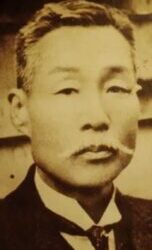





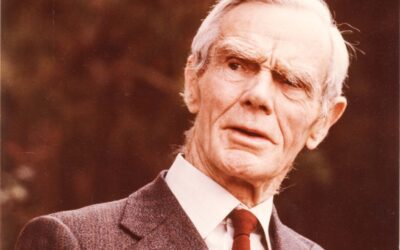



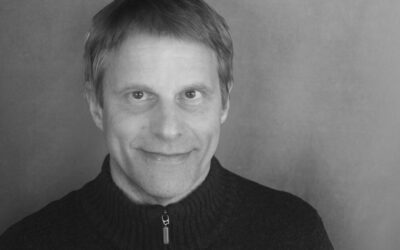
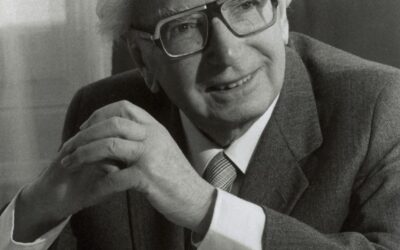
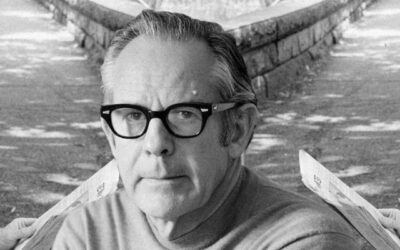
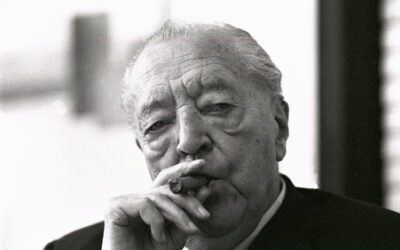
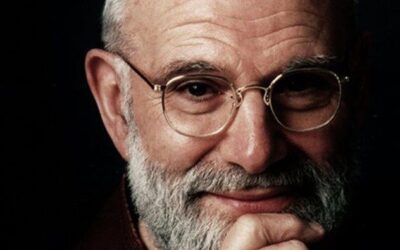


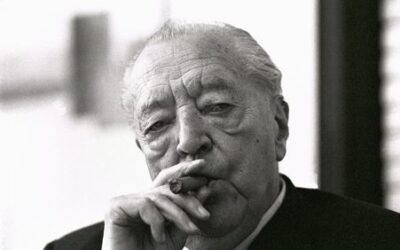


0 Comments